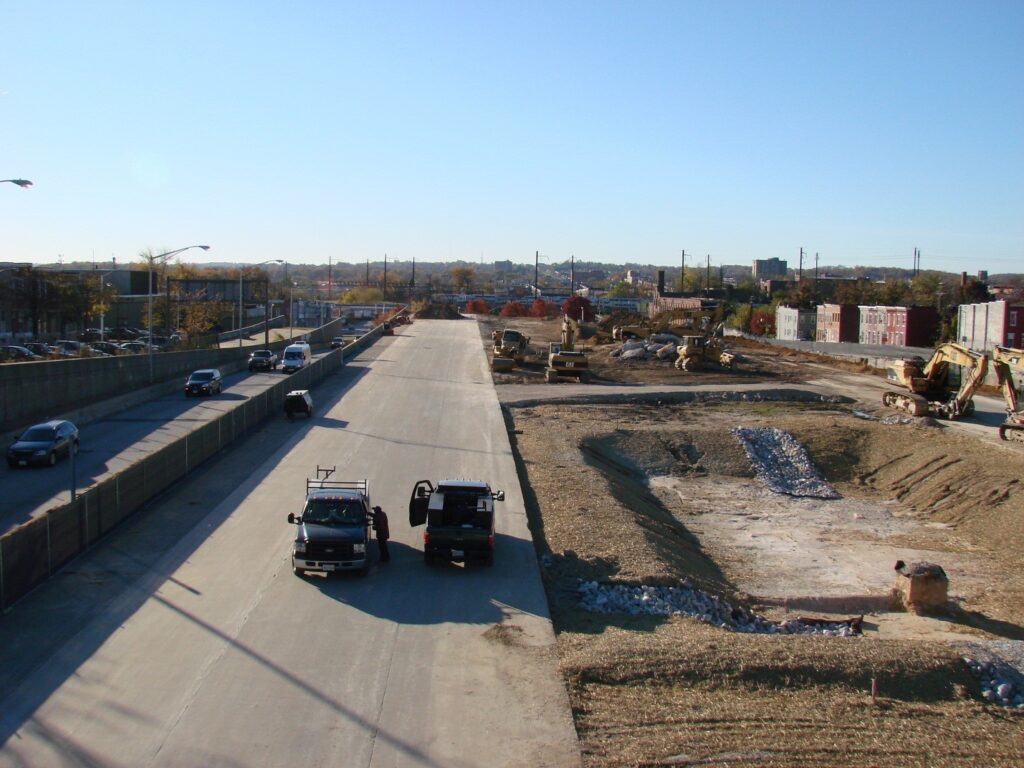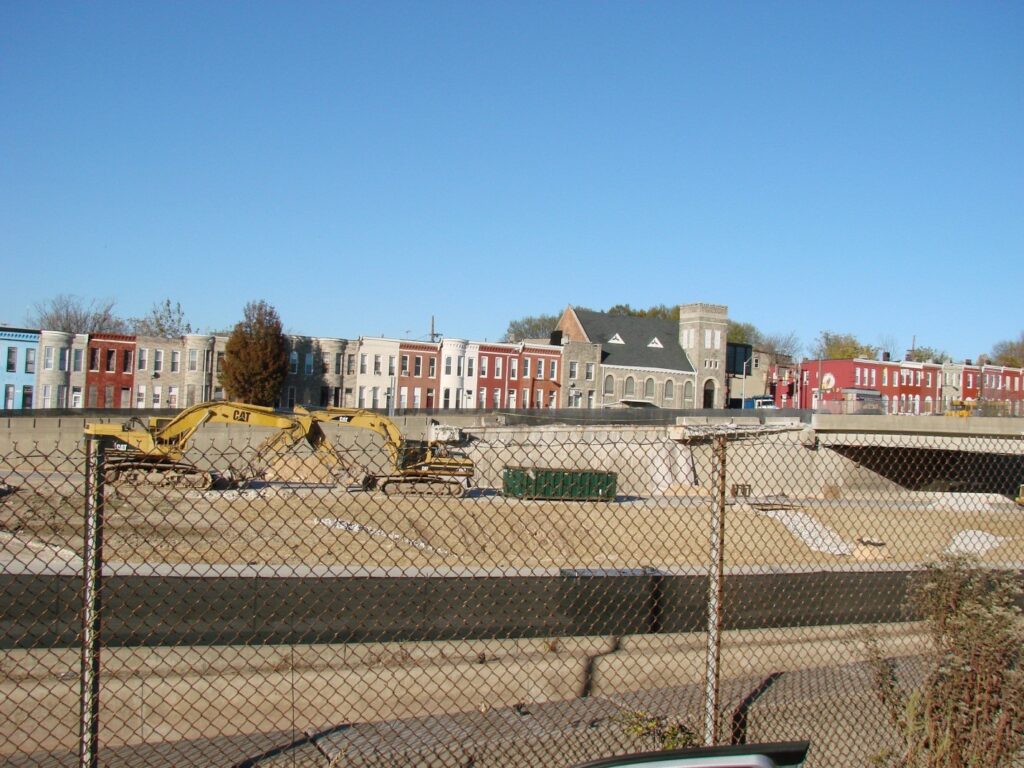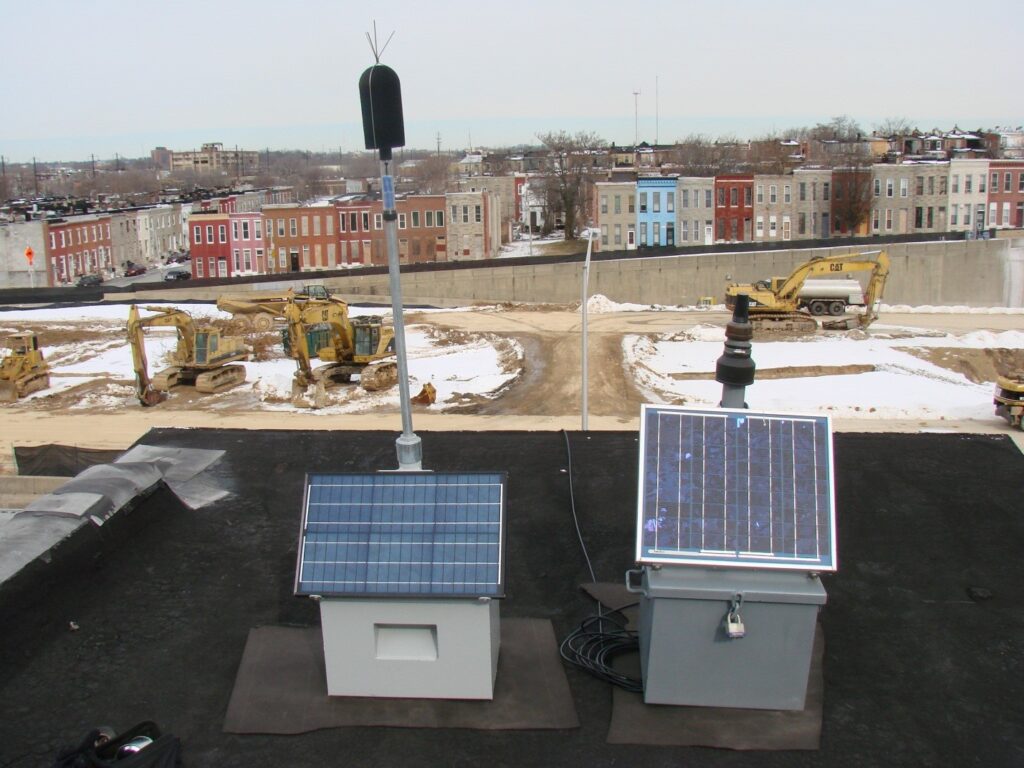Being a good neighbor is important, especially when you are knocking down a 30-foot retaining wall bordering row houses and a busy intersection. GeoSonics/Vibra-Tech has the monitoring technology and expertise to help you know every movement, noise and dust particle that exists in a community before starting a project, allowing you to keep the peace.
The Maryland Transit Authority awarded McCormick Taylor of Baltimore, Maryland the planning phase and Potts & Callahan, Inc. of Baltimore, Maryland the demolition phase of the West Baltimore Parking Expansion Project. The project included removing a 30-foot-high retaining wall in West Baltimore that bordered a busy intersection and residential row houses. Once the structure was removed, the site needed to be excavated in preparation for a future parking lot. In order for Potts & Callahan, Inc. to begin the removal and excavation project, McCormick Taylor needed to ensure that the construction would not cause any disruption to the intersection, row houses, historical church and elementary school located in close proximity to the existing retaining wall.
GeoSonics/Vibra-Tech was retained by McCormick Taylor to conduct preconstruction surveys to evaluate baseline conditions of surrounding properties. Prior to the start of the project, GeoSonics/Vibra-Tech installed Re:mote vibration, noise and dust monitoring systems. Re:mote seismographs and sound level meters were placed in six locations and traffic patterns were observed to learn which vehicles triggered measurable vibrations and decibels to identify existing ambient vibrations and noises in the construction perimeter. Three dust monitors were placed in the perimeter to measure levels of airborne particulate for PM10 and PM2.5 prior to the start of the project.
The elementary school was of particular concern to McCormick Taylor, so a special study was conducted to test the effects of vibrations and noise in or around the perimeter of the school. Using project criteria, construction vibration was not to exceed 0.5 inches per second and the maximum noise limit was 95 dBA. Particulate matter limits were set at 35 μg/m³ for PM2.5 and 150 μg/m³ for PM10.
The Re:mote monitoring system took vibration, noise and dust measurements continuously. Results were posted to a customized project website every 15 minutes where project personnel could access the data. When the equipment measured a reading that was near or exceeded the criteria, project personnel were notified by text and email.
By documenting existing structural conditions, vibration, noise and dust at the site prior to the start of the project and by continuously monitoring for concordance to the established limits of each perimeter of concern, GeoSonics/Vibra-Tech assisted our client in the successful execution of the project. Additionally, GeoSonics/Vibra-Tech took the opportunity during the preconstruction survey to answer questions for the residents who lived in the row houses. As a result the neighbors were understanding and knew their property was taken into consideration during the construction project.
Check out our Dust Services for more information on Re:mote Dust Monitoring.



Contact the Maryland Office to learn more about this project.
